Visit Versailles

The Palace of Versailles is a huge place where art and nature combine perfectly. King Louis XIV is the creator of this unique palace, known
for its incredible architecture and French gardens. It belongs at the top of your "must-see" bucket list for the City of Light and
is easy to reach for a day trip - or even a half-day visit.
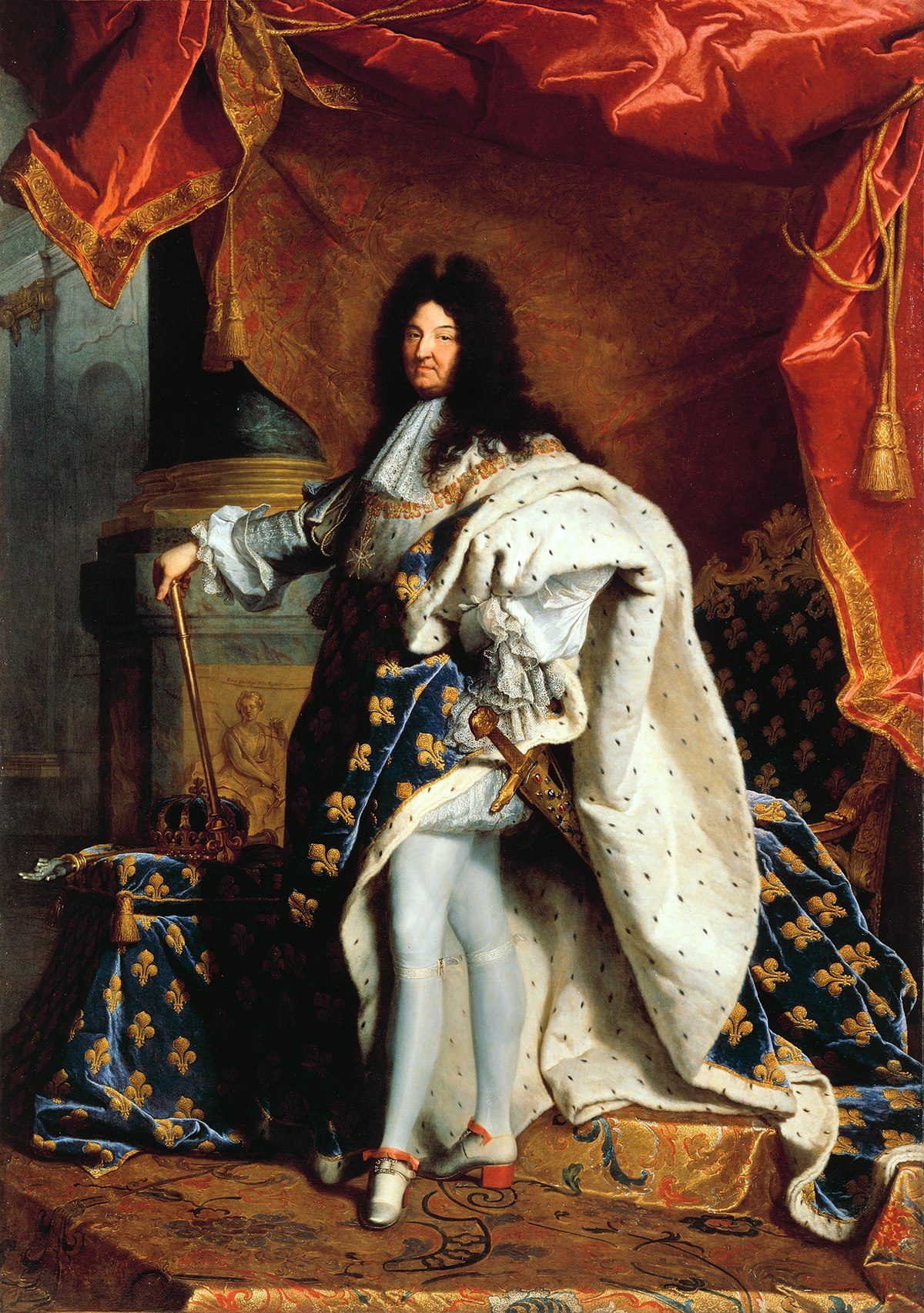
-_revêtu_du_grand_costume_royal_en_1779_-_Google_Art_Project.jpg)
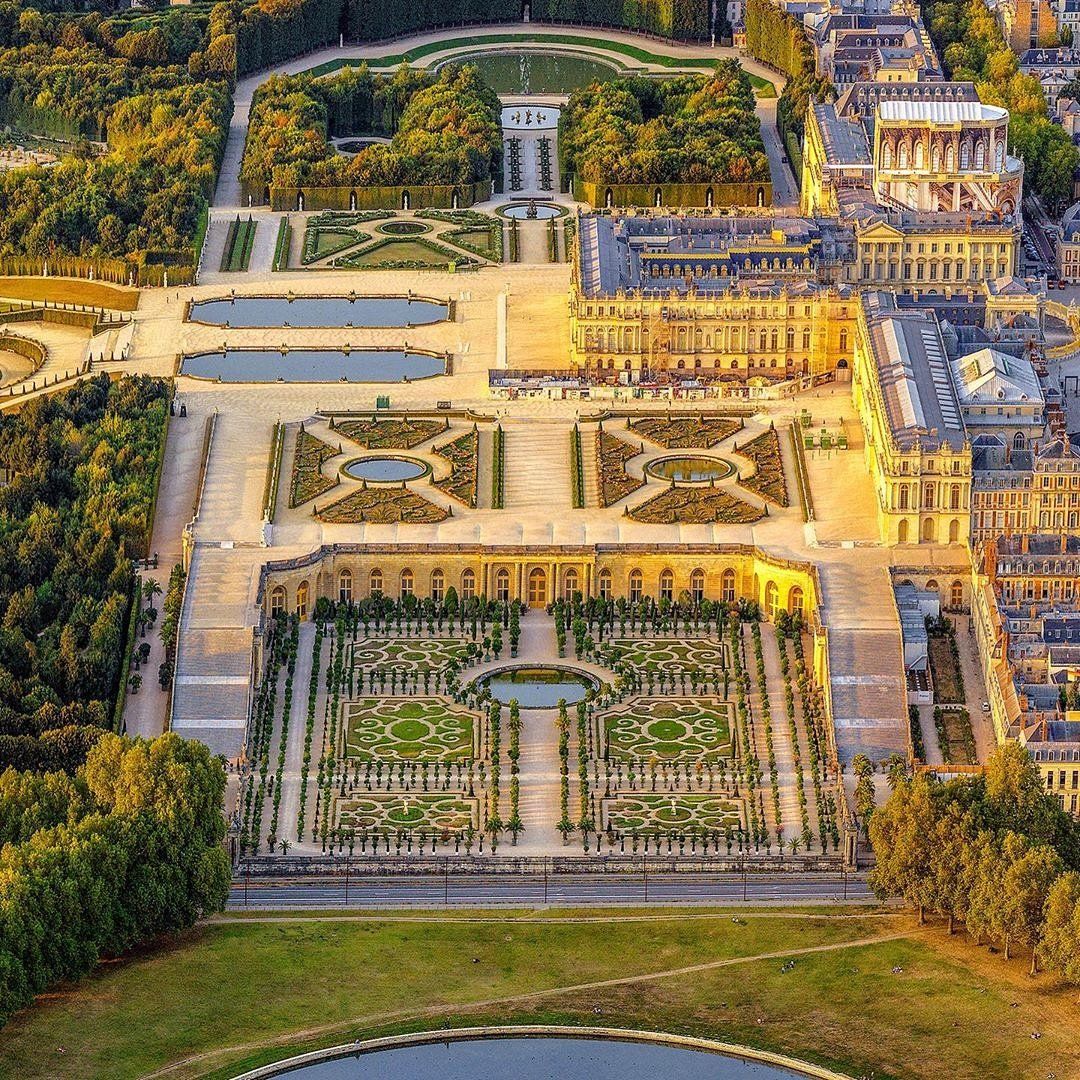
Located away from the city of Paris, the palace is a symbol of monarchic power. Louis XIV gathered around him the most important people of the kingdom. Princes, courtiers and ministers live with him in Versailles. Everything in this palace is unique. Today, it is difficult to realize that this vast estate worthy of the "Sun King", as Louis liked to be called, was at first only a simple hunting lodge.
Here is a non-exhaustive list of what you can visit in Versailles :
Inside Versailles :
La galerie des Glaces
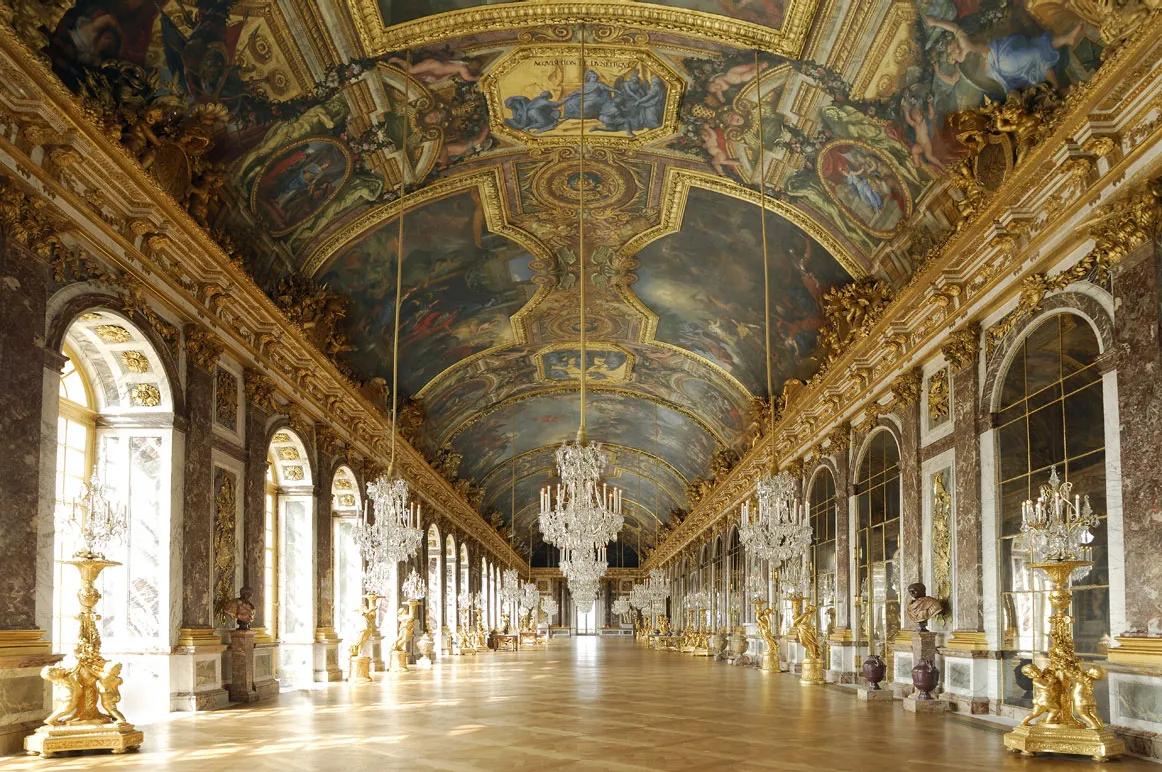 The Hall of Mirrors or Grand Gallery is a baroque style gallery located in the Palace of Versailles, of which it is one of the emblematic
pieces. It was intended to illustrate the power of the absolute monarch Louis XIV and to dazzle his visitors, by its ornamentation, by its
rich iconography composed by Charles Le Brun and by its unpublished dimensions. The gallery is covered with 357 mirrors, 21 mirrors in each
of the 17 arches facing 17 windows. Located on the second floor of the central body of the castle, it faces, to the west, the gardens of
Versailles, whose perspective it completes. The ceiling is decorated with paintings from the workshop of Charles Le Brun illustrating the
achievements of the first twenty years of Louis XIV's personal reign. They feature the king himself in thirty large compositions.
The Hall of Mirrors or Grand Gallery is a baroque style gallery located in the Palace of Versailles, of which it is one of the emblematic
pieces. It was intended to illustrate the power of the absolute monarch Louis XIV and to dazzle his visitors, by its ornamentation, by its
rich iconography composed by Charles Le Brun and by its unpublished dimensions. The gallery is covered with 357 mirrors, 21 mirrors in each
of the 17 arches facing 17 windows. Located on the second floor of the central body of the castle, it faces, to the west, the gardens of
Versailles, whose perspective it completes. The ceiling is decorated with paintings from the workshop of Charles Le Brun illustrating the
achievements of the first twenty years of Louis XIV's personal reign. They feature the king himself in thirty large compositions.
It was in the Hall of Mirrors that the Treaty of Versailles was signed between the Allies and the representatives of the young German democracy, putting an end to the First World War and redrawing the borders of Europe and the colonies, on June 28, 1919.
La chambre du Roi
.jpg) The sumptuous decoration of gold and silver brocade on a crimson background of the room is decorated with paintings, chosen by Louis XIV
himself. The most important and symbolic room of the royal apartment, the bedroom is used at several times of the day: the king holds the
ceremonies of "rising" and "bedtime", dines at his "petit couvert" and may receive some courtiers or
ambassadors. It was in this room that Louis XIV died on September 1, 1715, after seventy-two years of reign. The sumptuous decoration of
gold and silver brocade on a crimson background of the room is decorated with paintings, chosen by Louis XIV himself.
The sumptuous decoration of gold and silver brocade on a crimson background of the room is decorated with paintings, chosen by Louis XIV
himself. The most important and symbolic room of the royal apartment, the bedroom is used at several times of the day: the king holds the
ceremonies of "rising" and "bedtime", dines at his "petit couvert" and may receive some courtiers or
ambassadors. It was in this room that Louis XIV died on September 1, 1715, after seventy-two years of reign. The sumptuous decoration of
gold and silver brocade on a crimson background of the room is decorated with paintings, chosen by Louis XIV himself.
The decoration of the King's room is worthy of his rank: the furniture is sumptuous and full of gilding. In the center of the room is a monumental four-poster bed, closed by hangings that isolate the sovereign from the cold. The top of the bed is decorated with four bunches of white ostrich feathers, a luxurious product reserved for the royal couple. A golden balustrade prevents access to the bed: it allows the space reserved for the king to be sacred. The courtiers invited to attend the King's rising or setting were not allowed to cross it.
Les appartements de la Reine
.jpg) The bedroom is the main room of the apartment, the one where the queen stood most often. She slept there, often joined by the king. In the
morning, she received guests during and after her toilette, which was a courtly moment as regulated by etiquette as the king's rising. It
was also here that public births took place: nineteen "Children of France" were born. The decoration preserves the memory of the
three queens who occupied the room: the compartmentalization of the ceiling goes back to Queen Maria Theresa, but the grisaille paintings by
Boucher were made for Marie Leszczinska, as well as the woodwork. All these elements were preserved from the time of Marie-Antoinette, for
whom only the furniture and the fireplace were delivered new.
The bedroom is the main room of the apartment, the one where the queen stood most often. She slept there, often joined by the king. In the
morning, she received guests during and after her toilette, which was a courtly moment as regulated by etiquette as the king's rising. It
was also here that public births took place: nineteen "Children of France" were born. The decoration preserves the memory of the
three queens who occupied the room: the compartmentalization of the ceiling goes back to Queen Maria Theresa, but the grisaille paintings by
Boucher were made for Marie Leszczinska, as well as the woodwork. All these elements were preserved from the time of Marie-Antoinette, for
whom only the furniture and the fireplace were delivered new.
La chapelle royale
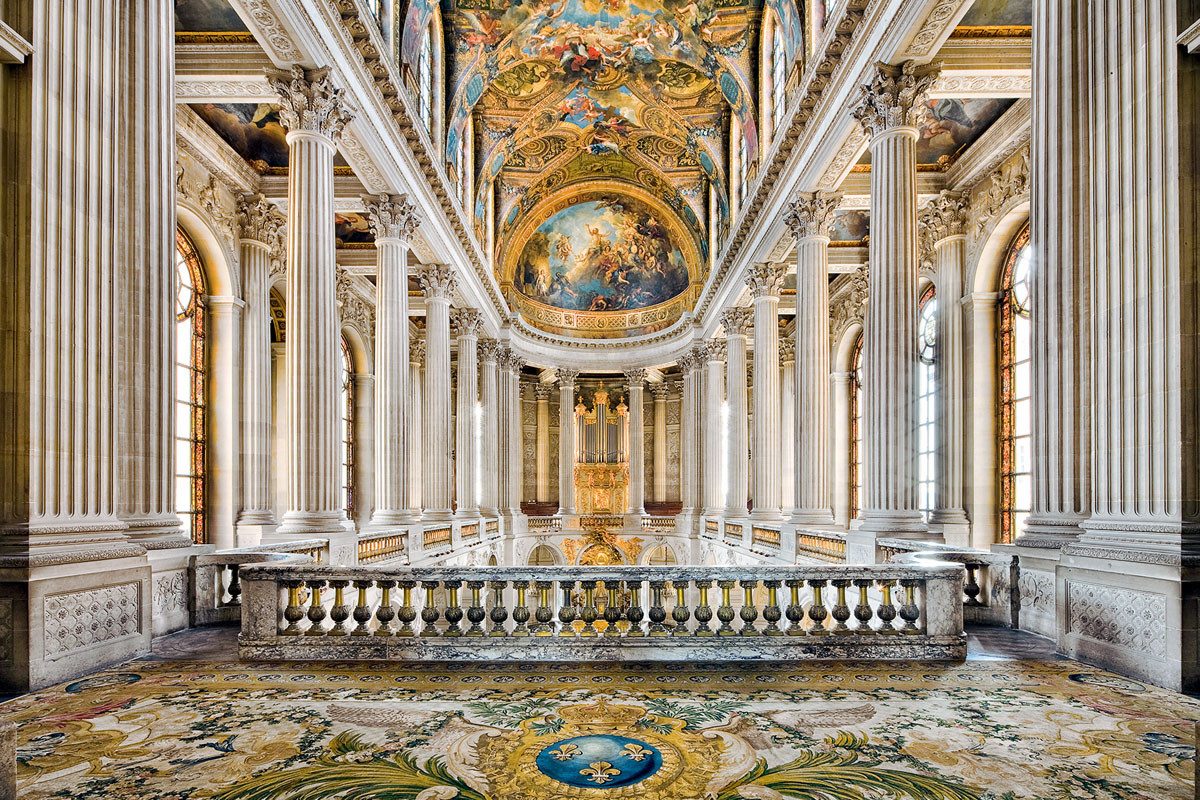
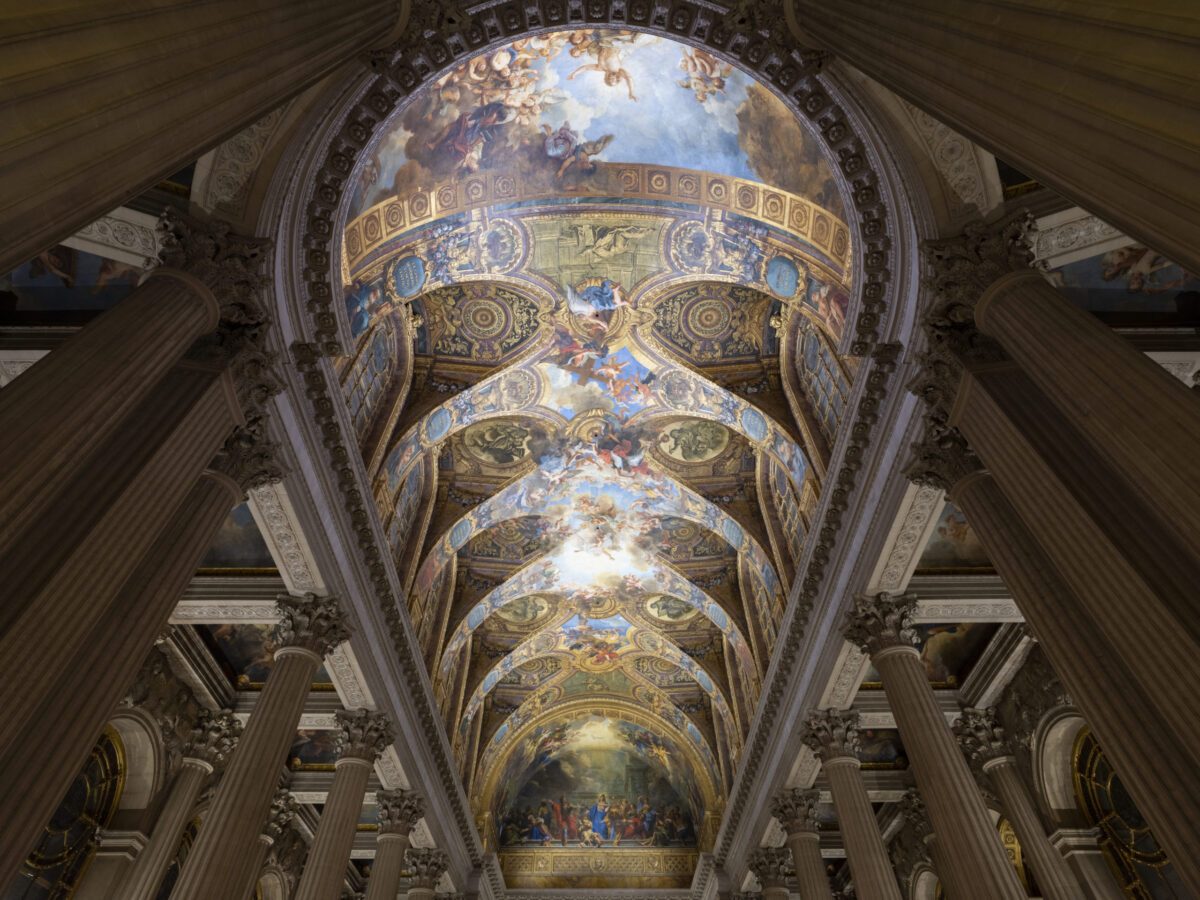 The chapel of the Palace of Versailles is a palatial chapel located in the Palace of Versailles, near the corner between the wing of the
Grand Appartement du Roi and the north wing. The Royal Chapel was completed in 1710 at the end of the reign of Louis XIV after 23 years of
work. The king only went down there for the great religious feasts where he took communion, for the ceremonies of the Order of the Holy
Spirit, for baptisms and for the marriages of the Children of France which were celebrated there from 1710 to 1789. This exceptional
palatine chapel, located in the castle for the use of the king, was also used for all sorts of religious ceremonies, including the marriage
of the archduchess Marie-Antoinette to the future Louis XVI. Today, the chapel hosts classical music concerts, revisiting the classics of
the time, such as Lully, Vivaldi and Charpentier.
The chapel of the Palace of Versailles is a palatial chapel located in the Palace of Versailles, near the corner between the wing of the
Grand Appartement du Roi and the north wing. The Royal Chapel was completed in 1710 at the end of the reign of Louis XIV after 23 years of
work. The king only went down there for the great religious feasts where he took communion, for the ceremonies of the Order of the Holy
Spirit, for baptisms and for the marriages of the Children of France which were celebrated there from 1710 to 1789. This exceptional
palatine chapel, located in the castle for the use of the king, was also used for all sorts of religious ceremonies, including the marriage
of the archduchess Marie-Antoinette to the future Louis XVI. Today, the chapel hosts classical music concerts, revisiting the classics of
the time, such as Lully, Vivaldi and Charpentier.
L’opéra royal
 The Royal Opera of the Palace of Versailles is an opera house built under Louis XV at the end of the north wing of the Palace of Versailles.
The construction was started in 1768 by order of King Louis XV in anticipation of the weddings of his grandchildren3, the construction
lasted two years and the Opera was inaugurated on May 16, 1770 at the wedding of Louis XVI of France and Marie-Antoinette of Austria. For
the record, in order to meet the construction deadlines, Gabriel had all the trades work at the same time (for example, the woodwork was
done in the workshops while the structural work was still being finished), which explains some of the architectural inconsistencies in the
hall. Located at the end of the north wing of the Palace of Versailles, for a long time, the Royal Opera hosted only the most exceptional
events of Versailles, serving in turn as a theater, a ballroom, or even a banquet hall. And it was not until the Ancien Régime that the
650-seat hall opened more regularly to the public.
The Royal Opera of the Palace of Versailles is an opera house built under Louis XV at the end of the north wing of the Palace of Versailles.
The construction was started in 1768 by order of King Louis XV in anticipation of the weddings of his grandchildren3, the construction
lasted two years and the Opera was inaugurated on May 16, 1770 at the wedding of Louis XVI of France and Marie-Antoinette of Austria. For
the record, in order to meet the construction deadlines, Gabriel had all the trades work at the same time (for example, the woodwork was
done in the workshops while the structural work was still being finished), which explains some of the architectural inconsistencies in the
hall. Located at the end of the north wing of the Palace of Versailles, for a long time, the Royal Opera hosted only the most exceptional
events of Versailles, serving in turn as a theater, a ballroom, or even a banquet hall. And it was not until the Ancien Régime that the
650-seat hall opened more regularly to the public.
Outside Versailles :
Les jardins royaux
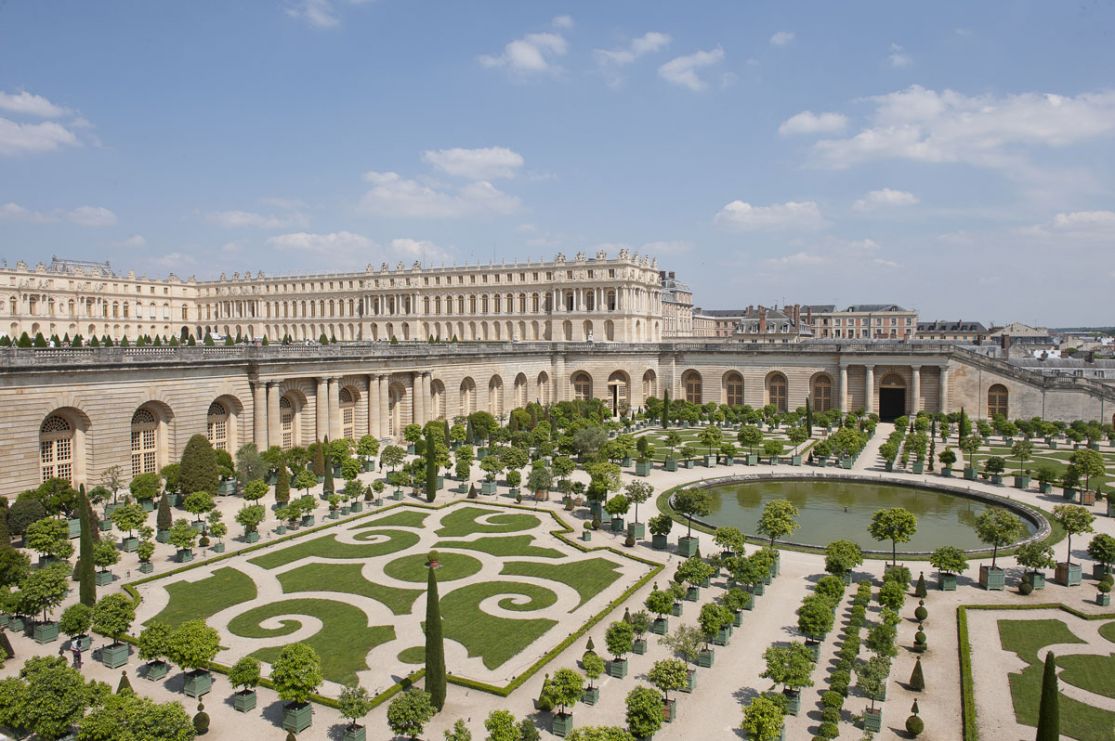
Located on a former hunting reserve, the Palace of Versailles has been able to extend its gardens over an area of 32 hectares of lawn, 25 miles of paths, 14 miles of trellises, 14 groves. For the statuary: 235 vases, 155 statues, 86 sculpted groups. 55 fountains and more than 600 water features. The total area of the park is 800 hectares.
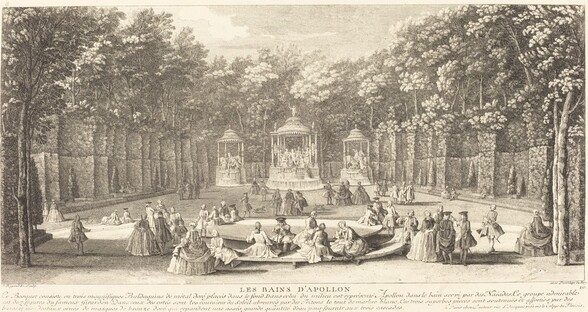
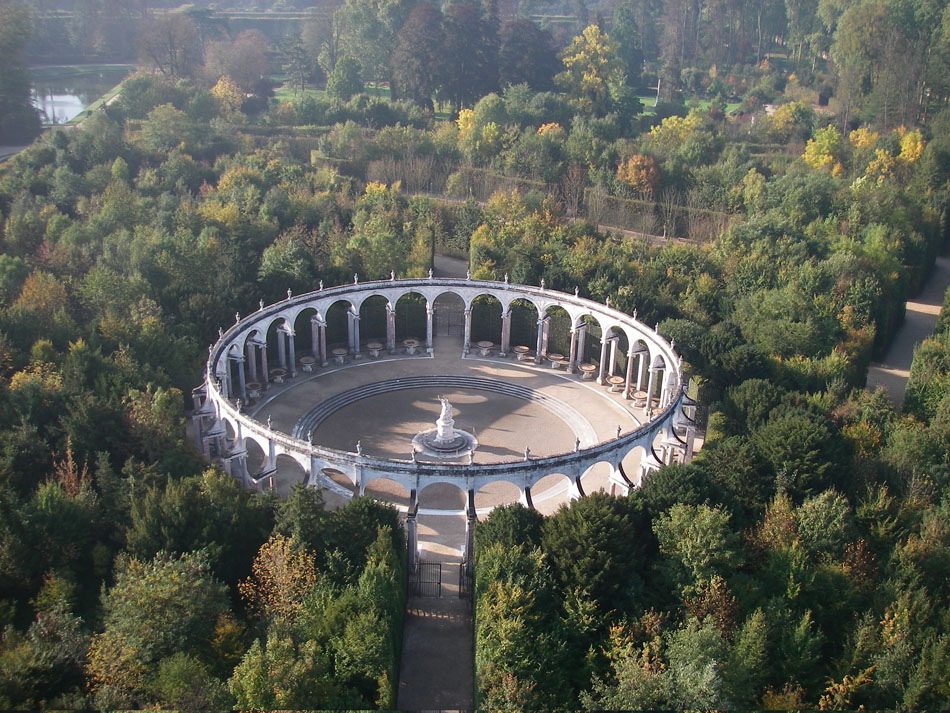
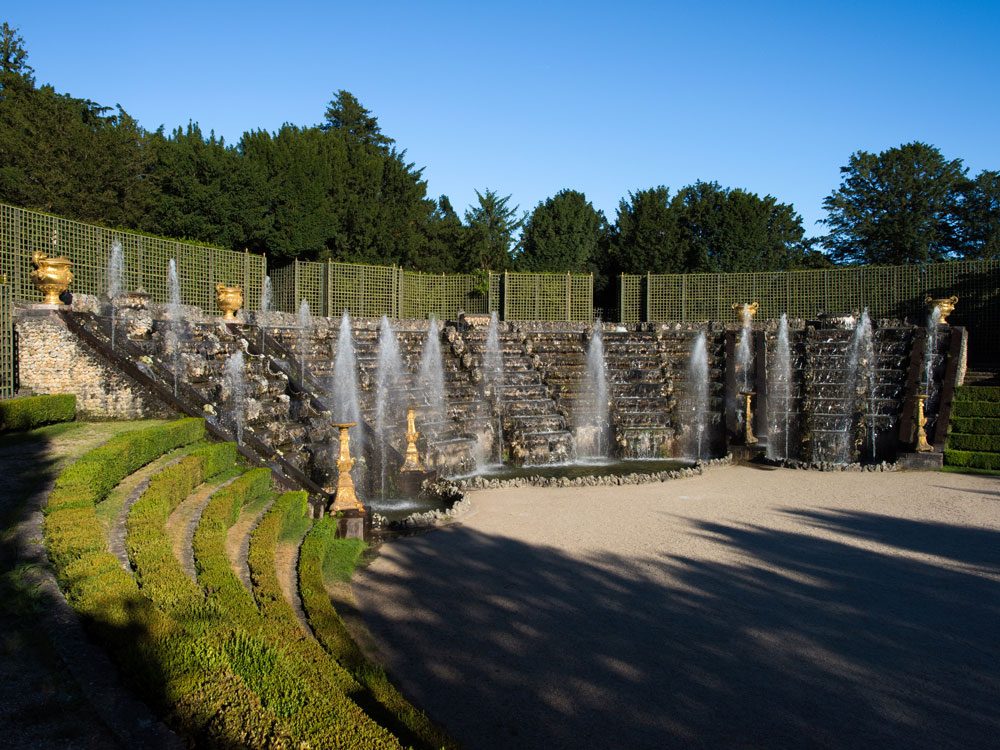 The creation of the gardens required a gigantic amount of work. Enormous "earthworks" are necessary to level the spaces, to lay
out the flowerbeds, to build the Orangery, to dig the basins and the Canal, where only woods, meadows and swamps existed before. The trees
were transported from many provinces of France; thousands of men, sometimes entire regiments, participated in this vast undertaking.
The groves of Versailles, created by the gardener and architect André Le Nôtre, are places of entertainment and have often been redesigned
over the years. Fountains, vases and statues decorate these spaces that regularly host the king's walk and the court's entertainment.
The creation of the gardens required a gigantic amount of work. Enormous "earthworks" are necessary to level the spaces, to lay
out the flowerbeds, to build the Orangery, to dig the basins and the Canal, where only woods, meadows and swamps existed before. The trees
were transported from many provinces of France; thousands of men, sometimes entire regiments, participated in this vast undertaking.
The groves of Versailles, created by the gardener and architect André Le Nôtre, are places of entertainment and have often been redesigned
over the years. Fountains, vases and statues decorate these spaces that regularly host the king's walk and the court's entertainment.
The total area of the park is 800 hectares.
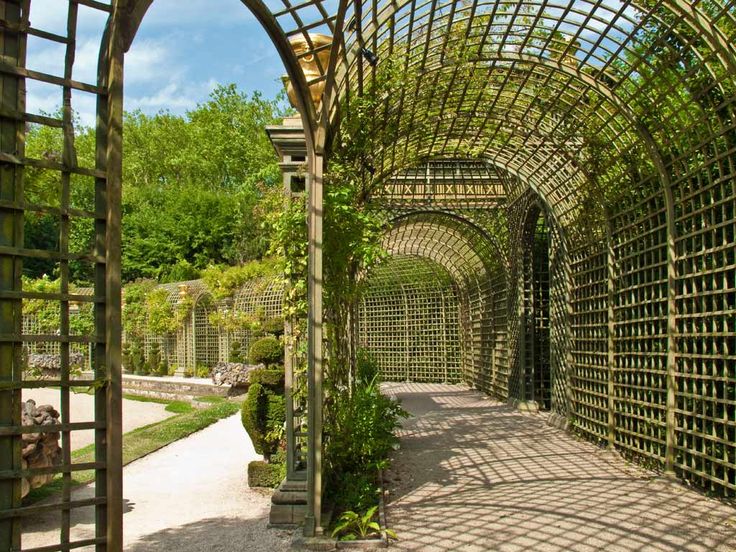
Le grand canal
.jpeg) In designing the Grand Canal, André Le Nôtre transformed the east-west perspective into a long luminous gap that seemed to have no end. The
work lasted eleven years, from 1668 to 1679. The Grand Canal, 1,670 meters long, was the setting for memorable celebrations. Thus in 1674,
when the whole of its banks were illuminated by thousands of terrines placed behind transparent decorations. As early as 1669, Louis XIV had
rowboats and vessels of all kinds sailing on it. From the central window of the Hall of Mirrors, visitors can see the great perspective that
leads their gaze from the Parterre d'Eau to the horizon. This original east-west axis, which predates the reign of Louis XIV, was developed
and extended by André Le Nôtre, who widened the royal avenue and dug the Grand Canal.
In designing the Grand Canal, André Le Nôtre transformed the east-west perspective into a long luminous gap that seemed to have no end. The
work lasted eleven years, from 1668 to 1679. The Grand Canal, 1,670 meters long, was the setting for memorable celebrations. Thus in 1674,
when the whole of its banks were illuminated by thousands of terrines placed behind transparent decorations. As early as 1669, Louis XIV had
rowboats and vessels of all kinds sailing on it. From the central window of the Hall of Mirrors, visitors can see the great perspective that
leads their gaze from the Parterre d'Eau to the horizon. This original east-west axis, which predates the reign of Louis XIV, was developed
and extended by André Le Nôtre, who widened the royal avenue and dug the Grand Canal.
Fontaine musicale et bassins
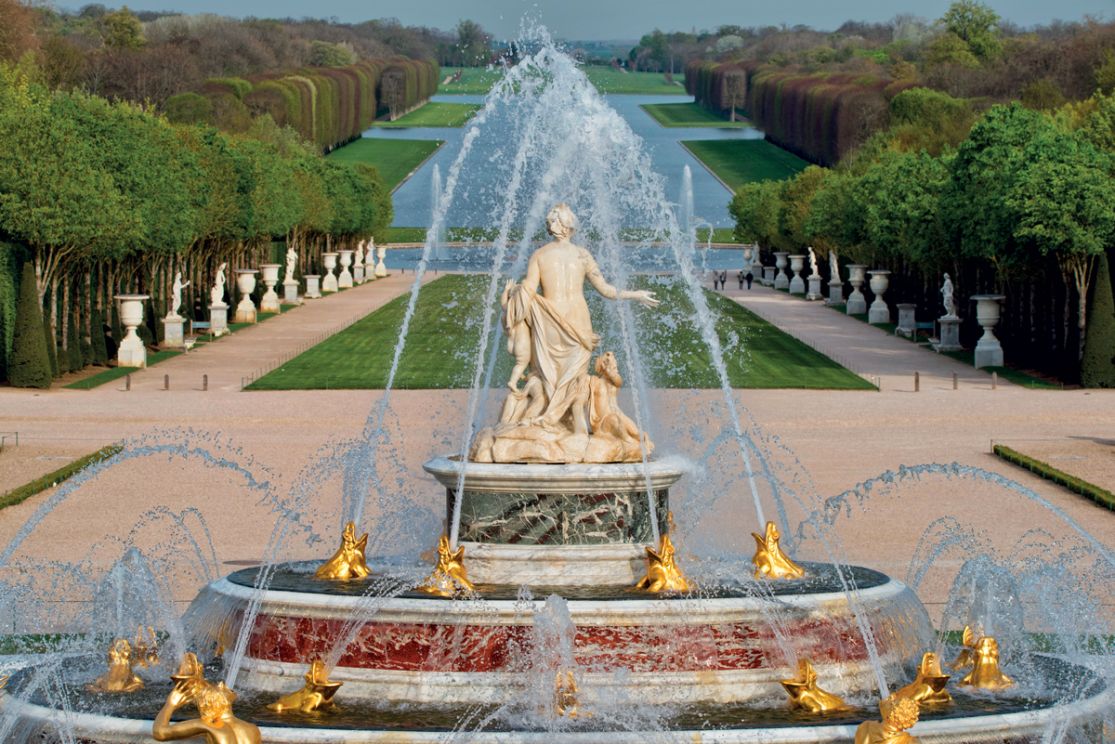
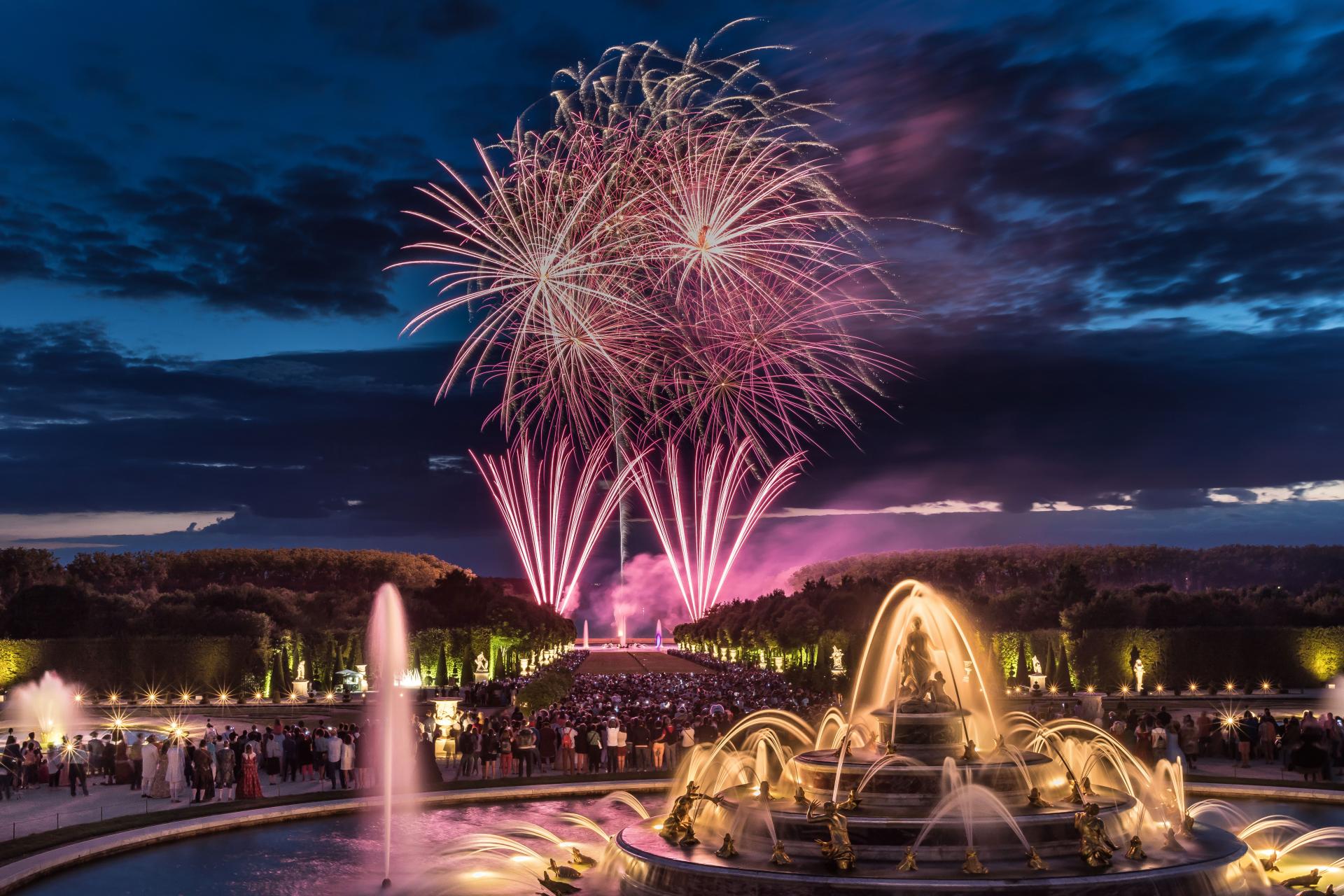 Even more than plant architecture and groves, water in all its forms is the privileged ornament of French gardens: the cascading water of
certain groves, the gushing water of fountains, the calm water of vast sheets that reflect the sky and the light, such as the Parterre d'Eau
or the Grand Canal. The most impressive is undoubtedly the basin of Neptune. It was under the direction of Le Nôtre that the Bassin de
Neptune, then called the pièce d'eau sous le Dragon, or pièce des Sapins, was undertaken between 1679 and 1682. A marine décor dedicated to
Neptune was planned, but the large groups planned were not realized under Louis XIV. The new basin, inaugurated by Louis XV, was
admired for the number, size and variety of water jets playing on the lead sculptures. Today, it has ninety-nine jets that constitute an
extraordinary hydraulic ensemble.
Even more than plant architecture and groves, water in all its forms is the privileged ornament of French gardens: the cascading water of
certain groves, the gushing water of fountains, the calm water of vast sheets that reflect the sky and the light, such as the Parterre d'Eau
or the Grand Canal. The most impressive is undoubtedly the basin of Neptune. It was under the direction of Le Nôtre that the Bassin de
Neptune, then called the pièce d'eau sous le Dragon, or pièce des Sapins, was undertaken between 1679 and 1682. A marine décor dedicated to
Neptune was planned, but the large groups planned were not realized under Louis XIV. The new basin, inaugurated by Louis XV, was
admired for the number, size and variety of water jets playing on the lead sculptures. Today, it has ninety-nine jets that constitute an
extraordinary hydraulic ensemble.
From April 1 to October 30, 2022, enjoy the Musical Gardens and the Great Musical Waters in the gardens and groves opened for the occasion.
Grand et petit Trianon

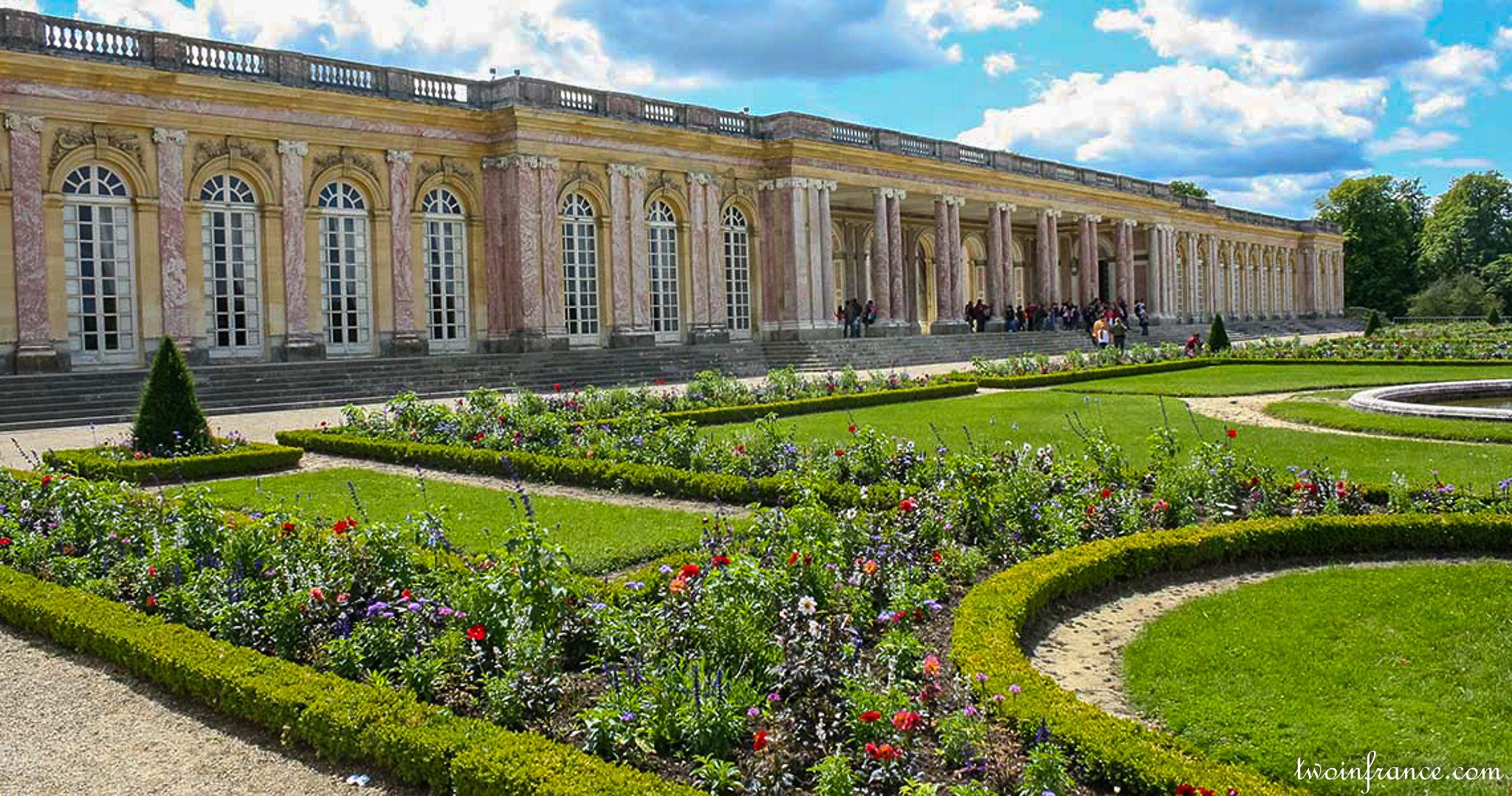 Grand Trianon:
Grand Trianon:
The Grand Trianon was built by Jules Hardouin-Mansart in 1687 on the site of the "Trianon de Porcelaine", which Louis XIV had
built in 1670 to escape the splendor of the Court and to shelter his love affairs with Madame de Montespan. The Grand Trianon is without
doubt the most refined group of buildings in the entire Versailles estate. Highly influenced by Italian architecture, this palace extends
over a single level, placed between courtyard and garden, covered by a flat roof, hidden by a balustrade, once decorated with groups of
children, vases, carved figures. The grand trianon was mainly used to accommodate the family and guests of royalty.
Petit Trianon:
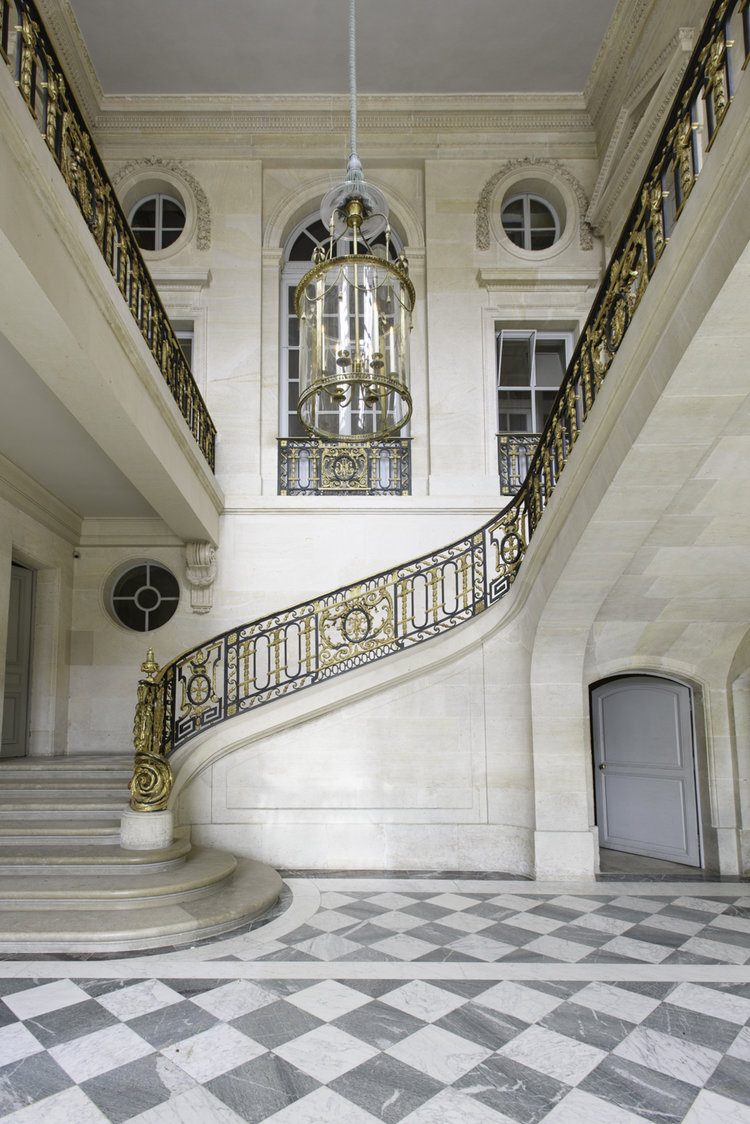
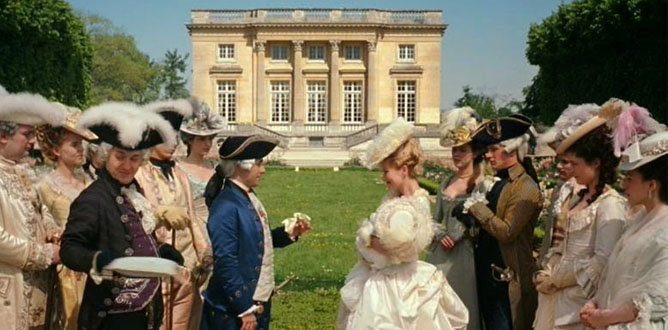 In 1758, Louis XV considered building a new small castle in the middle of the gardens he had been developing and embellishing for the past
ten years. He commissioned Ange-Jacques Gabriel, his first architect, to build a pavilion of sufficient size to accommodate his suite and
himself. Gabriel signed here a true manifesto of neo-classical architecture, a perfect example of the "Greek style" fashion that
was then spreading in Europe. The small trianon was the refuge of the Queen Marie-Antoinette when she wished to move away from the Court.
In 1758, Louis XV considered building a new small castle in the middle of the gardens he had been developing and embellishing for the past
ten years. He commissioned Ange-Jacques Gabriel, his first architect, to build a pavilion of sufficient size to accommodate his suite and
himself. Gabriel signed here a true manifesto of neo-classical architecture, a perfect example of the "Greek style" fashion that
was then spreading in Europe. The small trianon was the refuge of the Queen Marie-Antoinette when she wished to move away from the Court.
Le Hameau de la Reine
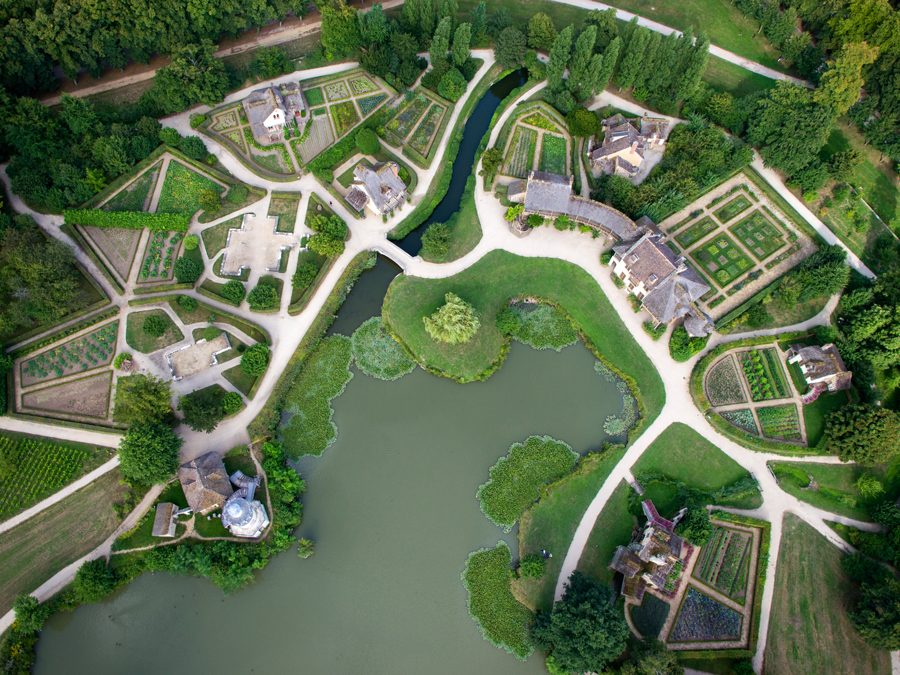
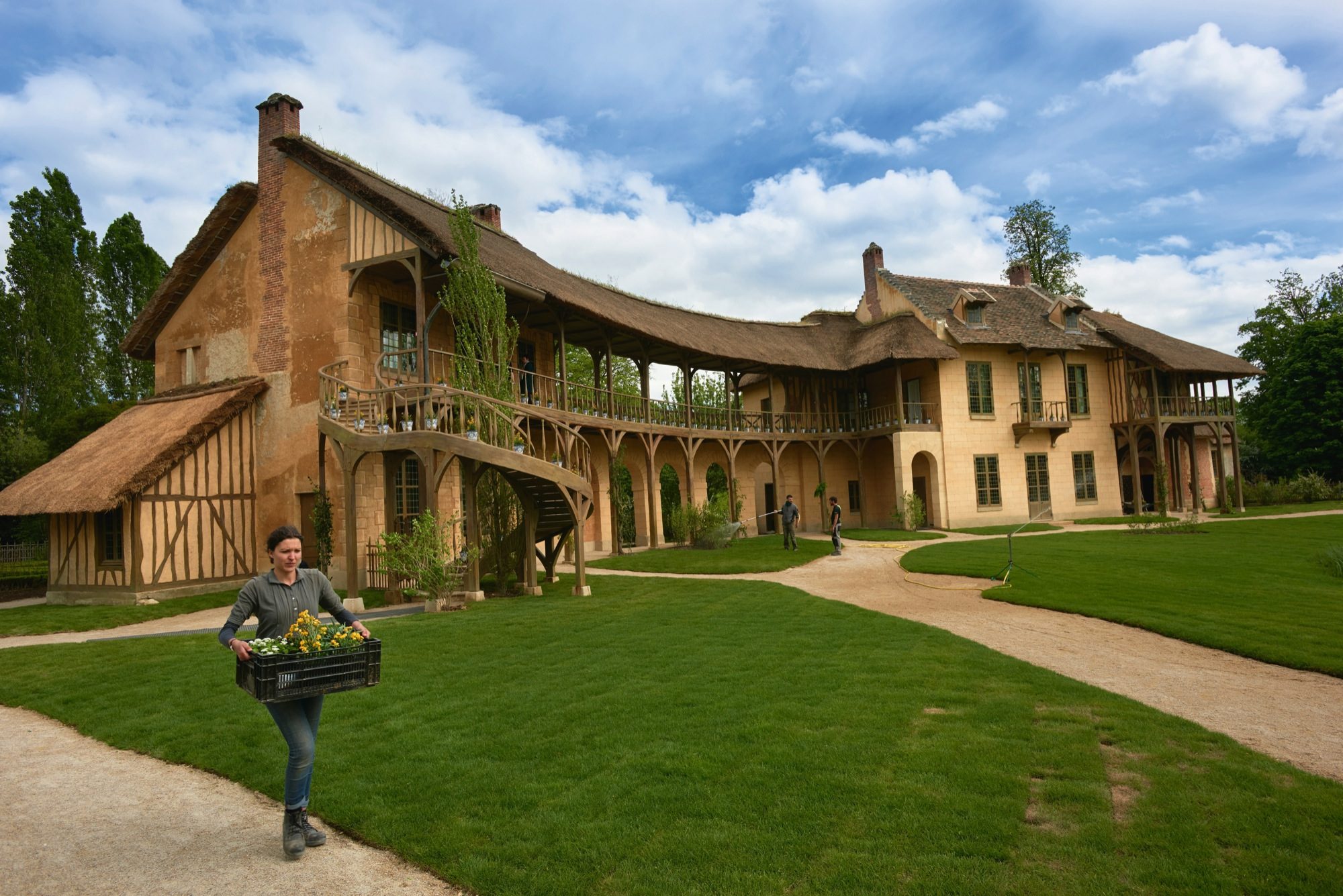 The Queen's hamlet is a dependency of the Petit Trianon located in the park of the Palace of Versailles. The style of the Queen's hamlet is
not clearly identifiable, made of a mixture of various rural architectures, but it has an undeniable unity. The thatched cottages are
arranged around the eastern shore of the large lake, like a real arc of a circle, with the ideal viewpoint being on the other side of the
lake. Queen Marie-Antoinette wanted to get away from the constraints of the Versailles court, longing for a more rustic life in a natural
setting inspired by the writings of Rousseau, a little paradise where theater and festivities would make her forget her condition as queen.
This country place, which was also a farm, marked the influence of the ideas of the physiocrats and philosophers of the Enlightenment on
the aristocracy of the time.
The Queen's hamlet is a dependency of the Petit Trianon located in the park of the Palace of Versailles. The style of the Queen's hamlet is
not clearly identifiable, made of a mixture of various rural architectures, but it has an undeniable unity. The thatched cottages are
arranged around the eastern shore of the large lake, like a real arc of a circle, with the ideal viewpoint being on the other side of the
lake. Queen Marie-Antoinette wanted to get away from the constraints of the Versailles court, longing for a more rustic life in a natural
setting inspired by the writings of Rousseau, a little paradise where theater and festivities would make her forget her condition as queen.
This country place, which was also a farm, marked the influence of the ideas of the physiocrats and philosophers of the Enlightenment on
the aristocracy of the time.
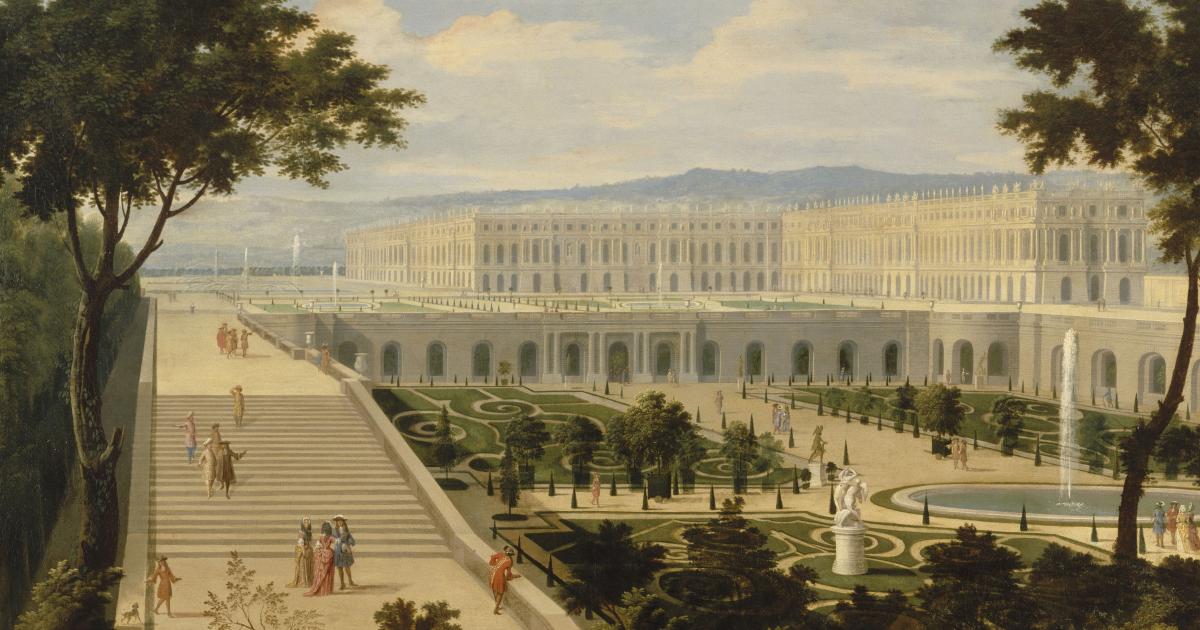
We hope that this tour of the castle of versailles will have you more, we say to you next week!
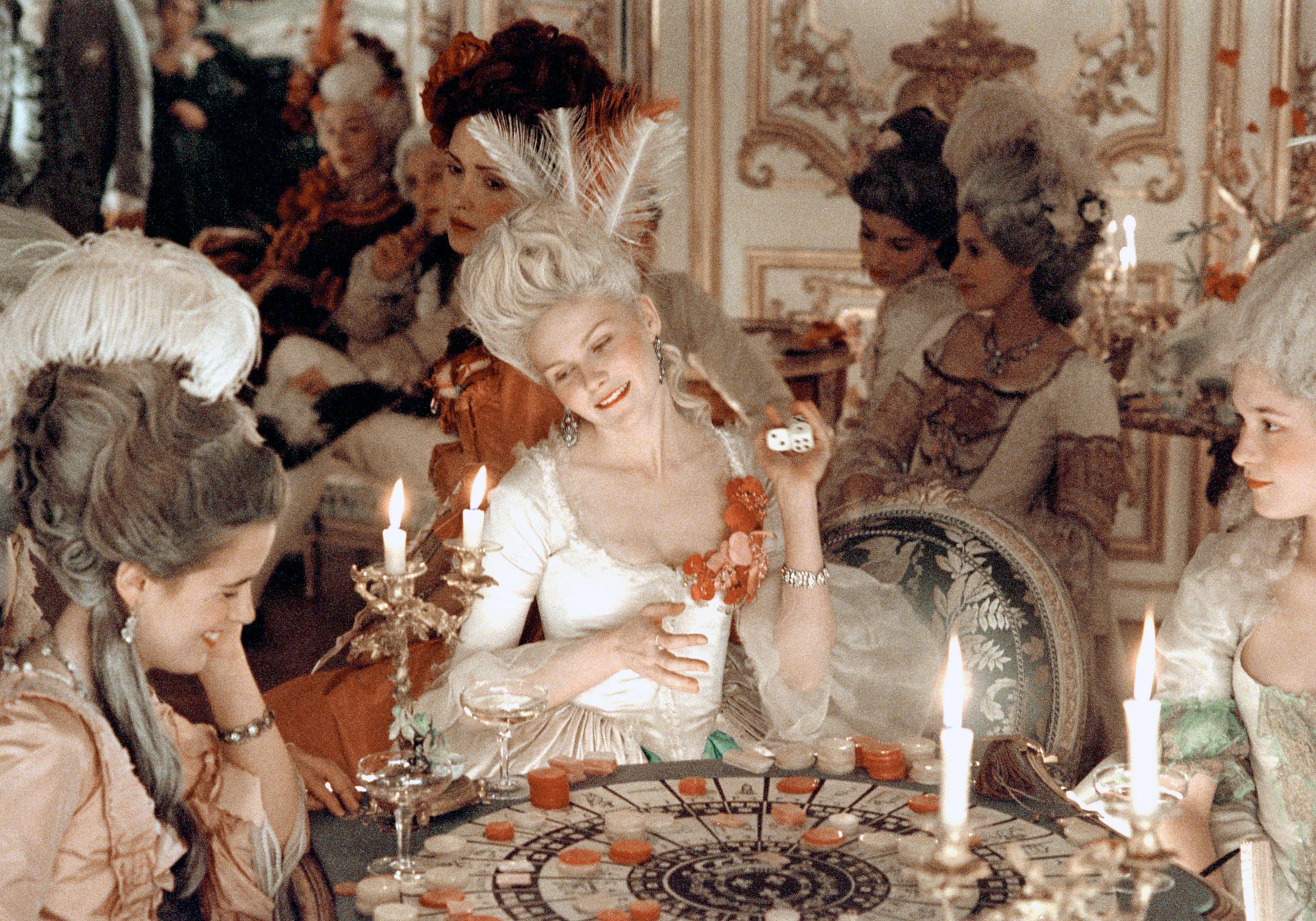
-
-Jade
Design by Monsieur Graphic
